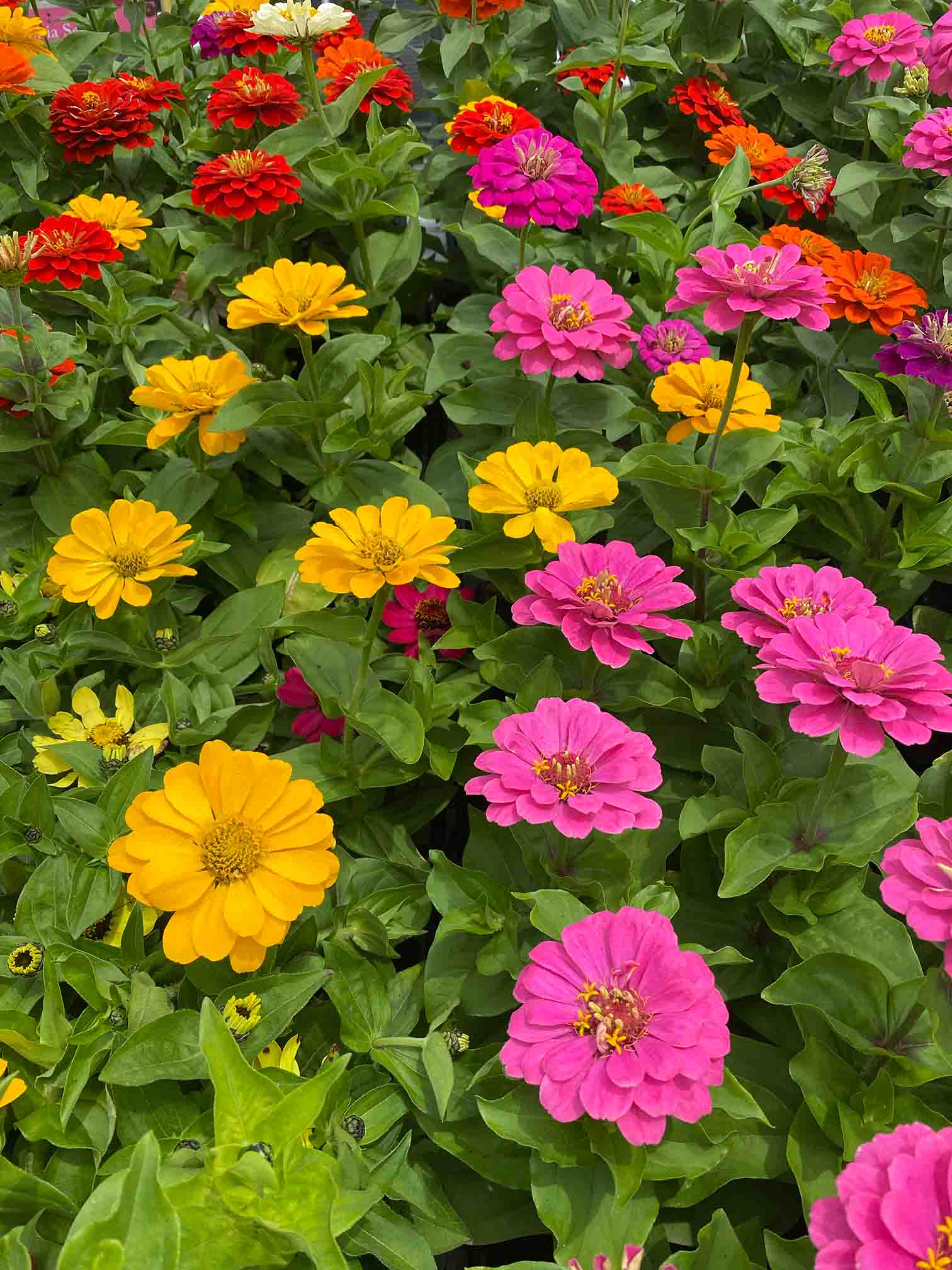
Welcome to Dirt Therapy: Zinnia Edition all of you garden gurus! Today I want to talk about one variety of flowers that I absolutely love! Let’s talk about Zinnias. You know, the cheerful, colorful bloomers that are supposed to be easy.
Zinnias love the hot weather and the full sun. If you provide this for them, they’ll reward you with long-lasting blooms perfect for cutting. The trouble is that in Kentucky’s humid summers, they can go from fab to fungus faster than you can say “powdery mildew.” Today we’re going to do a deep dive into the common problems that come up with Zinnias and how to fix them. So, without further ado….let’s get started!
Why do my Zinnias have white stuff on the leaves?
If your Zinnias look like someone sprinkled baby powder all over them, it’s likely powdery mildew. This is a common fungal disease that affects Zinnias. Kentucky’s humid summers tend to make this even more common.
Let’s fix it:
1) Space plants out to improve air circulation. Fungus thrives in wet, dark, and warm environments. Spacing out the plants will increase sunlight and air circulation to your plants, eliminating the ideal fungus environment.
2) Keep the leaves dry. When watering, focus on the roots of the plant at the soil level. Do your best to avoid getting the leaves wet.
3) Treat with a baking soda spray. A baking soda spray will disrupt the growth and reproduction of the fungus.
a) Mix 1 tsp baking soda, 1 quart of water, and 1 drop of dish soap. (Do not make the mixture too strong as this can damage the leaves) Add mixture to a spray bottle and spray leaves down. You can try a small area of the leaves first to make sure it will not cause any damage.
b) Avoid applying in the hot/sunny hours of the day to prevent damage to the leaves. Repeat spray every 5-7 days as needed. Reapply each time it rains.
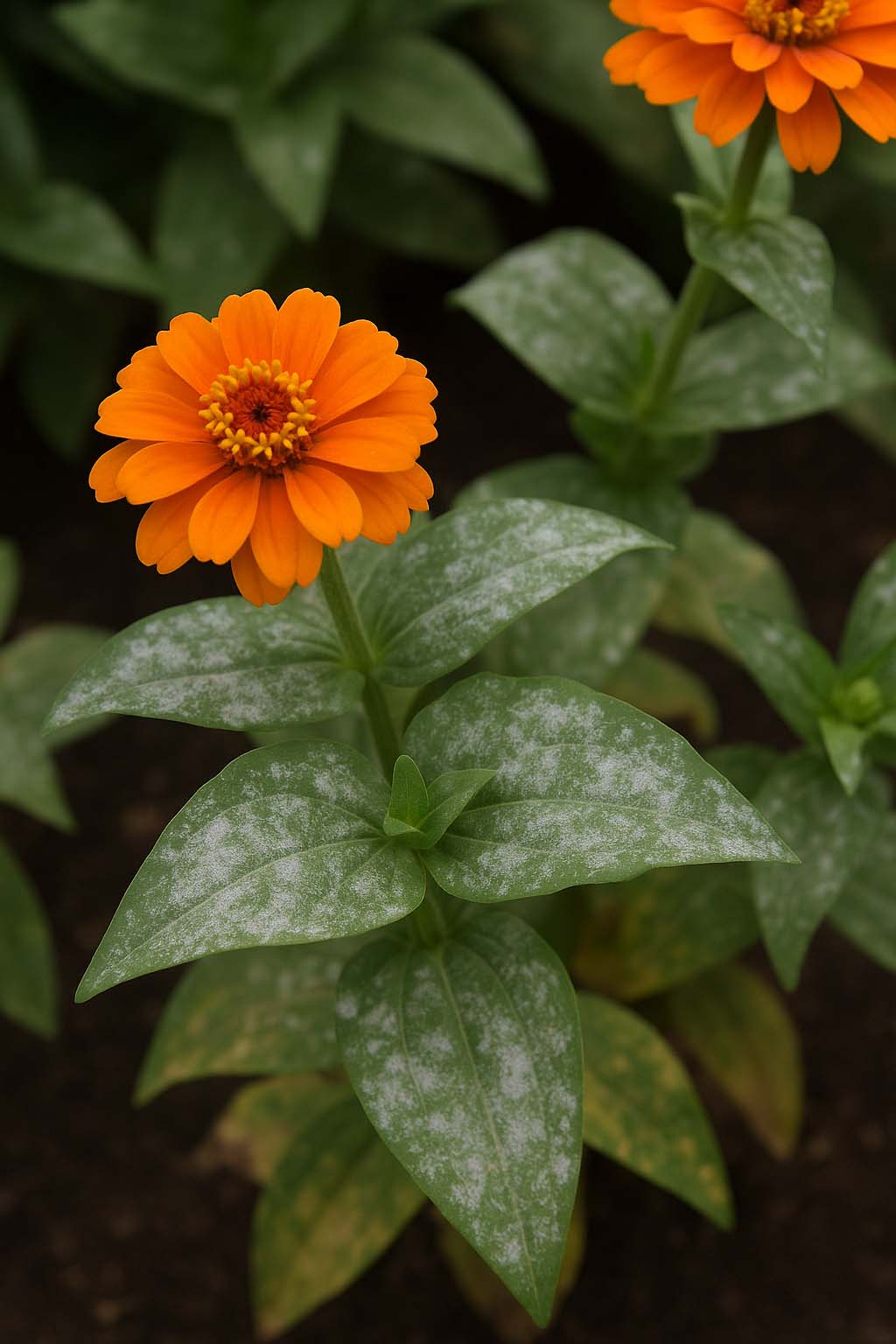
Why are my Zinnia leaves turning yellow or getting brown spots?
If your Zinnia leaves are turning yellow, spotted, or starting to wilt, you’re not alone! This is another common complaint, especially with Kentucky’s humid summer climate. This is a Zinnia’s not-so-subtle way of saying, “I’m not thriving.” These symptoms usually point to fungal leaf spot disease or issues with drainage and moisture levels.
Fungal Leaf Spot: What It Is and Why It Happens
There are several fungal pathogens that can infect Zinnias. As mentioned earlier, these thrive in warm, wet, and dark conditions.
They can easily spread through:
- Overhead watering
- Splashing rain/irrigation
- Poor airflow between plants
Signs to watch for:
- Tiny brown or black dots that spread and merge
- Yellowing around the spots (a “halo” effect)
- Premature leaf drop from the bottom up.
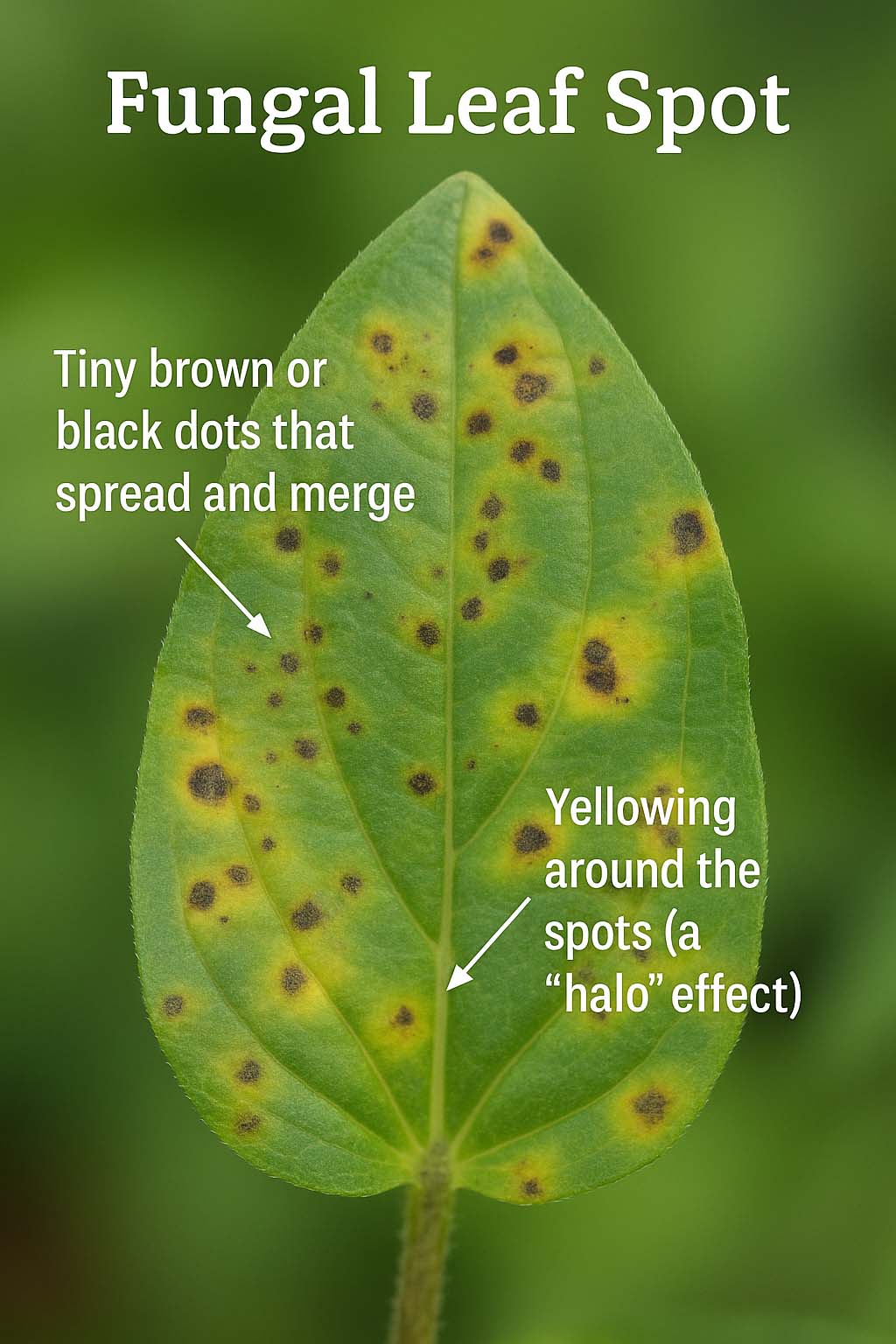
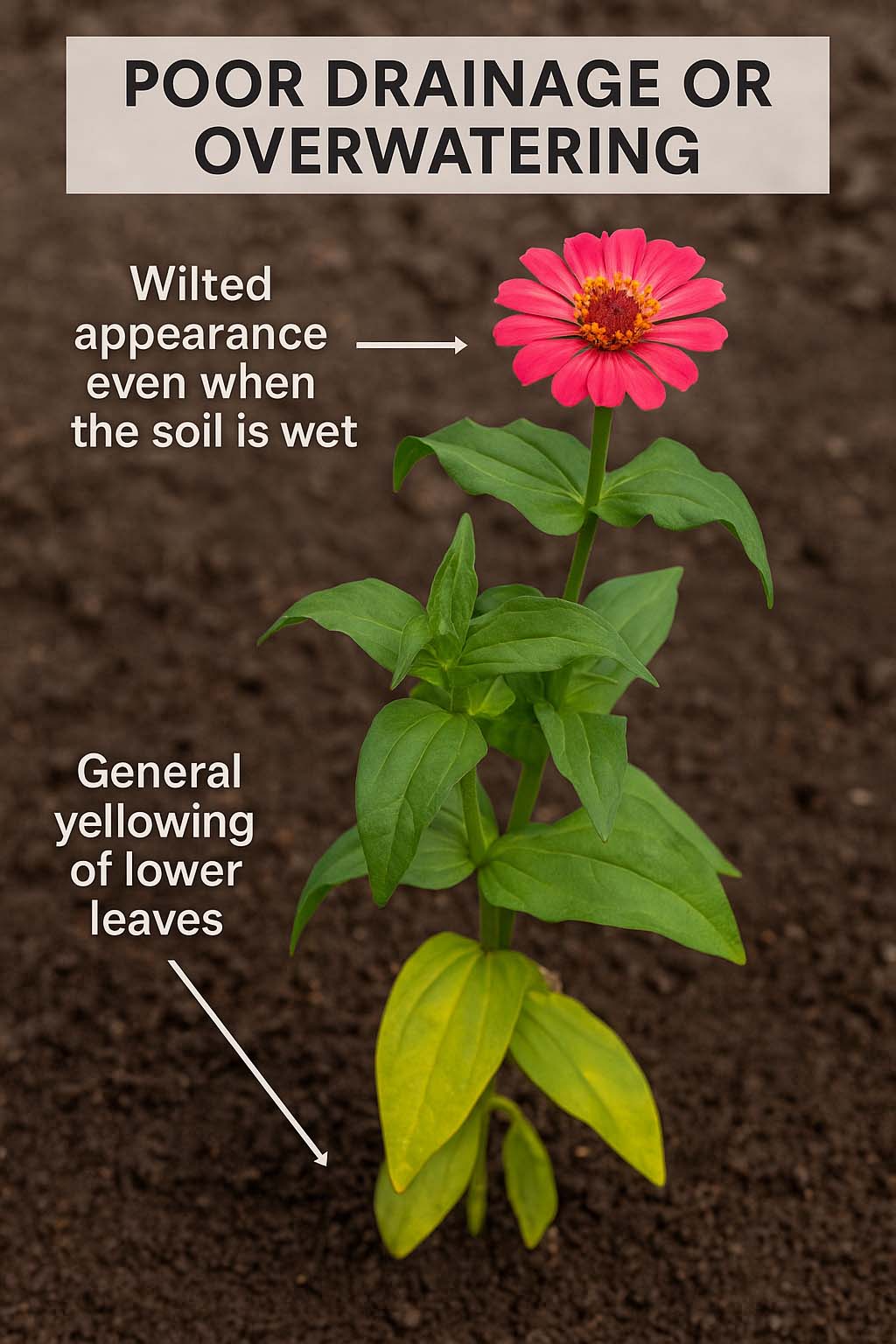
Poor Drainage or Overwatering: The Silent Killer
Zinnias do not like constantly wet feet. If your soil stays soggy or your containers don’t drain well, the roots can start to rot.
Root rot shows up as:
- General yellowing of lower leaves
- Wilted appearance even when the soil is wet
- Stunted growth or sparse blooms
Let’s fix these issues:
1) Improve air circulation: space plants at least 8-12 inches apart. Thin out overcrowded garden beds
2) Ensure there are enough drainage holes in the bottom pot. If there are not at least 4 drainage holes in the bottom you can add some using a drill.
3) Water smart: water in the morning around the base of the plant. Avoid getting the leaves wet.
4) Mulch around the base: use a light layer of mulch to prevent splash up from rain and soil, which spreads fungal spores.
5) Remove affected leaves: prune off any spotted or yellowing leaves to stop the spread. Discard them-DO NOT COMPOST INFECTED FOLIAGE
6) Try a fungicide if needed: If the discolorations are widespread, use an organic option such as neem oil or a copper-based fungicide. Spray early in the morning or in the evening to prevent the sun from burning the leaves.
Why are my Zinnias tall, skinny, and falling over?
If your Zinnias are flopping around like they’ve had a long night out, they’re likely not getting enough sun or support. No worries, this is the easiest fix of them all!
Let’s fix it:
1) Make sure your Zinnias are getting at least 6-8 hours of full sun every day
2) When the Zinnia plant is still young (6-8 inches tall) use your fingers or scissors to pinch off the stem just above the leaf node. This will cause the plant to branch out two new stems from the leaf node below the cut. Why should you do this? It’s going to prevent the Zinnia from growing with one long stem straight up, causing a bushier and fuller plant. More stems=more blooms.
3) If your Zinnias are falling over, consider using a garden stake or small cage to help support them.
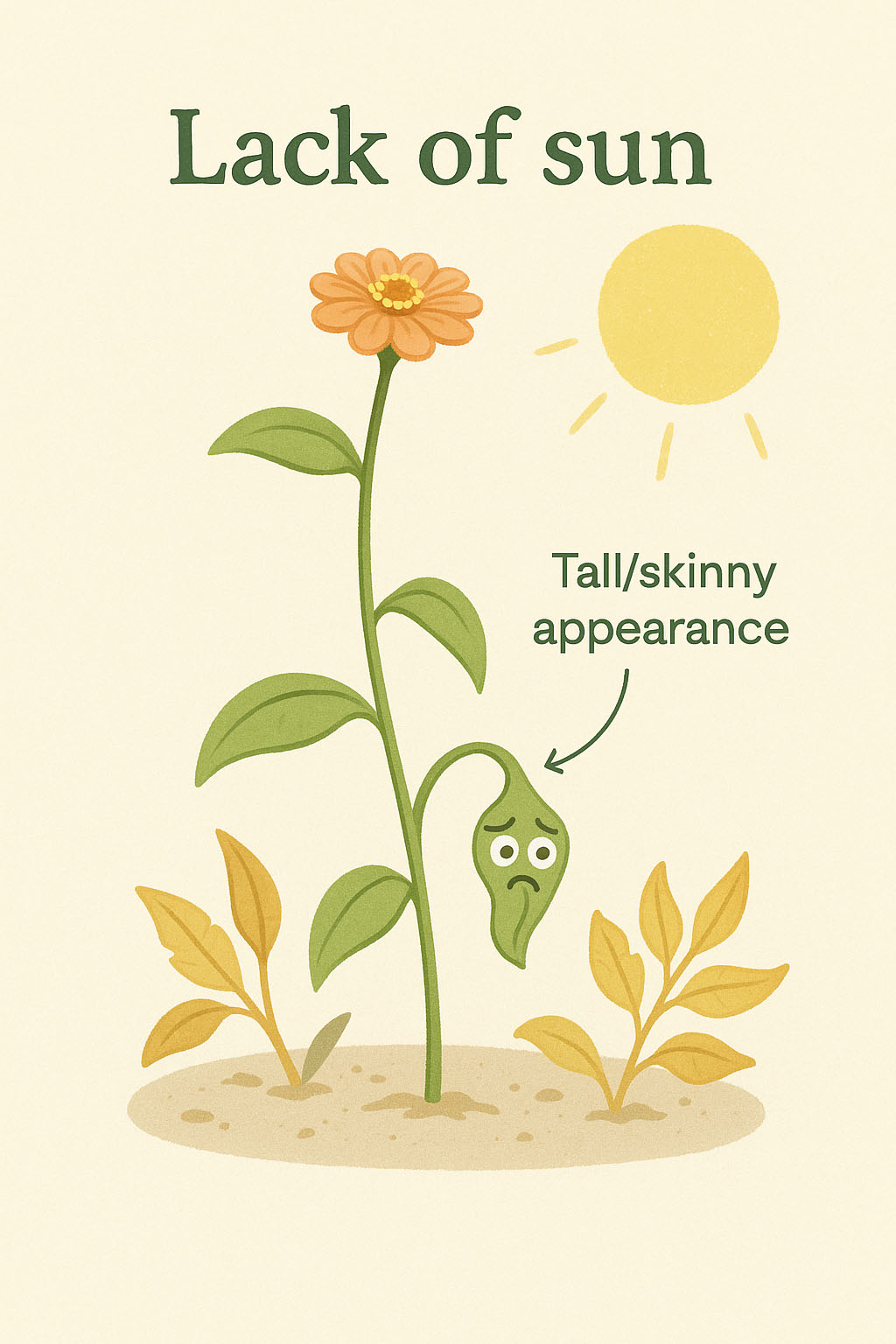
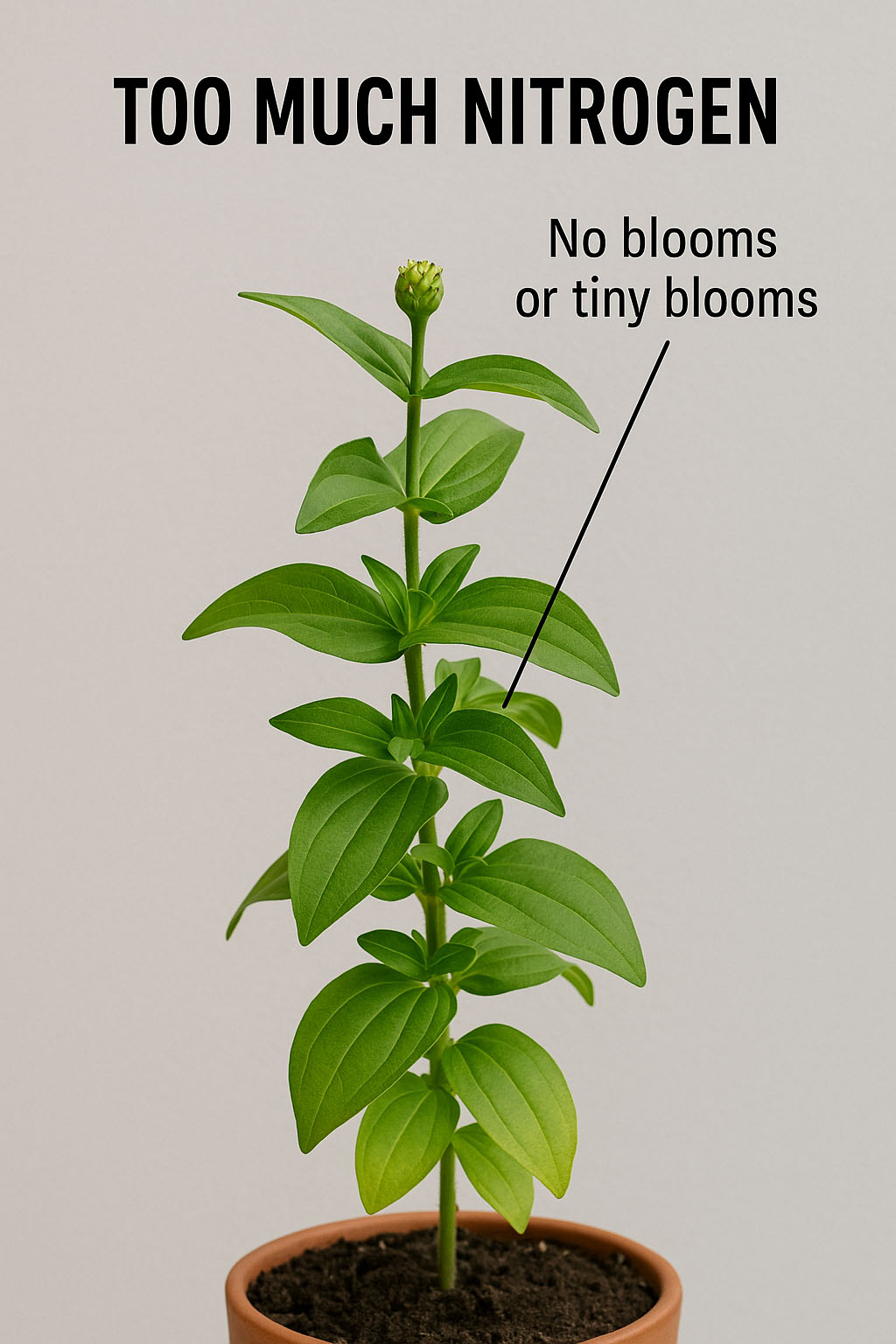
Why aren’t my Zinnias blooming?
Are you noticing that your Zinnias have no blooms? What about tiny blooms? These are both indicators that your plants may be getting too much nitrogen or not enough sunlight.
Let’s fix it:
1) If you are using a high nitrogen fertilizer (20-10-10), it’s time to cut back. Zinnias actually have very low nitrogen requirements. Nitrogen is responsible for fueling growth of leaves and stems. With a higher nitrogen fertilizer, the Zinnia plant will focus on growing more foliage instead of blooms. Consider changing to a lower nitrogen fertilizer such as 10-10-10 or 5-10-10.
2) Deadhead regularly to keep flowers coming. Deadheading will help the Zinnia plant focus energy on producing more blooms instead of getting the dead blooms to fall off.
3) Ensure they are planted in an area that gets at least 6-8 hours of direct sun every day.
Are Zinnias really worth the trouble?
You bet they are! Sure we’ve covered a lot of common issues and solutions this week in Dirt Therapy: Zinnia Edition. But dispite these potential challenges, Zinnias are still one of the easiest, most rewarding annuals you can grow—even if they throw a little high maintenance attitude your way from time to time. With just a bit of planning (like giving them proper spacing, sun, and watering at the roots), they’ll reward you with a season-long show of color that makes any garden feel joyful.
They’re pollinator magnets, bringing in butterflies, bees, and even the occasional hummingbird for a visit. Plus, if you love fresh flowers in the house, few plants produce more cut-worthy blooms with such minimal effort.
Yes, you might need to keep an eye out for powdery mildew or adjust your watering habits a bit–but let’s be honest, the vibrant blooms and cheerful vibe Zinnias bring to your garden more than make up for the fuss. Give them a sunny stage, a little elbow room, and a watchful eye–and they’ll bloom their hearts out all summer long. Until next time, may your blooms be bold and your fungus be gone! HAPPY PLANTING EVERYBODY!!!
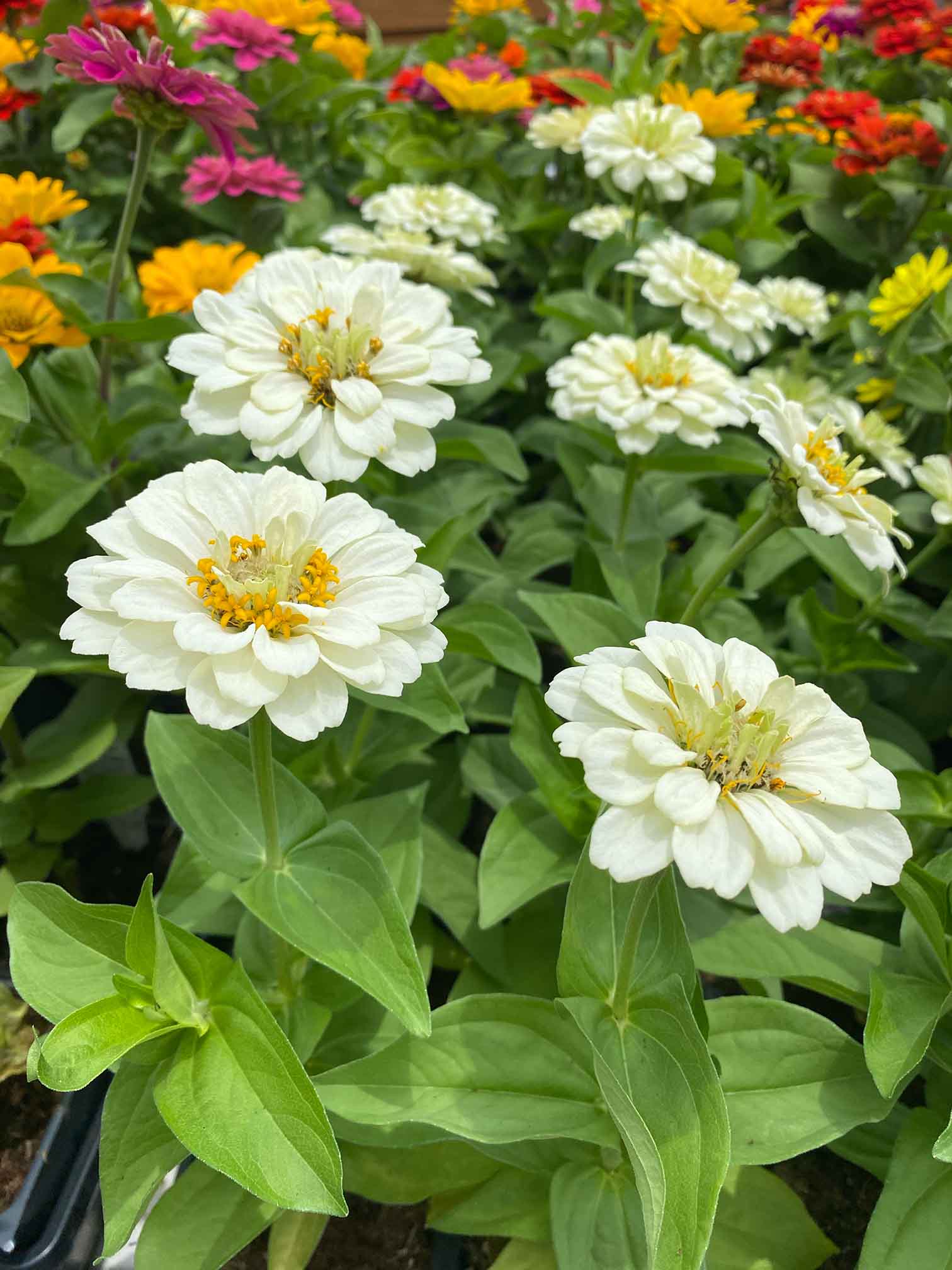
Did you enjoy Dirt Therapy: Zinnia Edition?
Looking for more info on how to build the flower or vegetable garden of your dreams? Check out this helpful blog post!

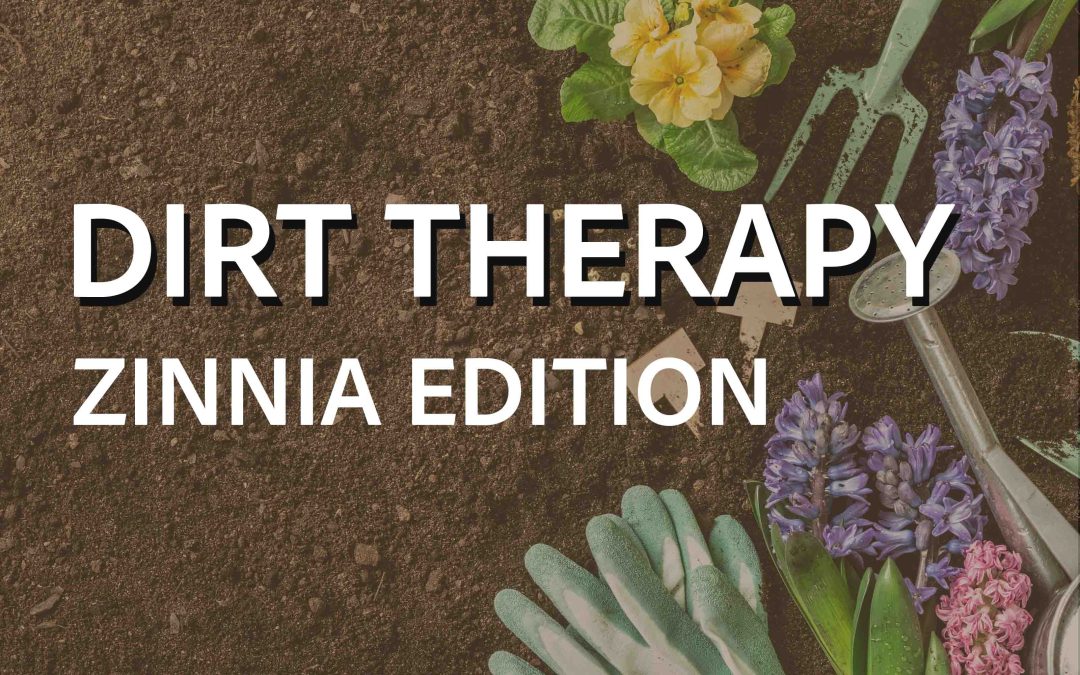
Recent Comments